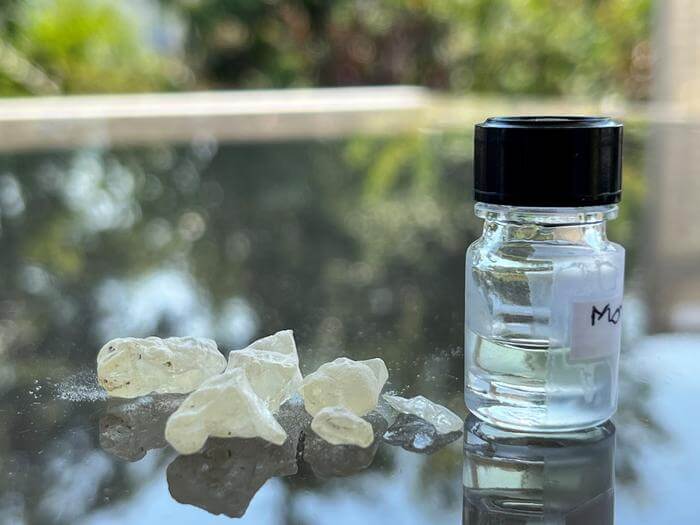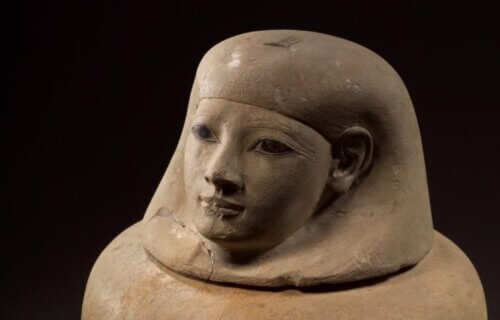JENA, Germany — Roughly 3,500 years ago, a pharaoh’s wet nurse met her end. Now, scientists have recreated what that mummification process smelled like, centuries after her death. Researchers say the remains of the pharaoh’s nurse were treated with a balm containing beeswax, plant oils, and imported palm resin. This lavish blend of ingredients underscores the noblewoman’s status as a highly valued member of the ruler’s inner circle, scientists explain.
Researchers utilized cutting-edge technology to identify the components of the balms used in the mummification of Senetnay, whose remains were excavated in 1900 by British archaeologist Howard Carter. The study also succeeded in recreating one of the scents used in the mummification process 3,500 years ago.
Earlier research indicates that Senetnay lived in Egypt around 1450 BC and served as the wet nurse to Pharaoh Amenhotep II. She bore the prestigious title “Ornament of the King.” After her death, her mummified organs were stored in four jars within a royal tomb in the Valley of the Kings.
Scientists from the Max Planck Institute of Geoanthropology in Germany analyzed substances from six balm samples taken from two jars that contained Senetnay’s lungs and liver. They discovered that both balms included beeswax, plant oils, animal fats, naturally occurring bitumen, and resins from coniferous trees such as pines and larches.
The research, published in the journal Scientific Reports, also identified the compounds coumarin and benzoic acid in samples from both jars. Coumarin has a vanilla-like scent and is found in various plants, including cinnamon and pea plants, while benzoic acid is present in fragrant resins and gums from numerous trees and shrubs.
Interestingly, the researchers detected two unique substances in the jar containing Senetnay’s lungs: larixol, found in larch resin, and another fragrant resin they speculate to be either dammar from dipterocarp trees in India and Southeast Asia, or a resin from Pistacia trees, which are part of the cashew family. This variation suggests that different balms may have been used for preserving different organs.
“The ingredients in the balm make it clear that the ancient Egyptians were sourcing materials from beyond their realm from an early date,” says Prof. Nicole Boivin, senior researcher on the project, in a media release. “The number of imported ingredients in her balm also highlights Senetnay’s importance as a key member of the pharaoh’s inner circle.”

Upon reviewing prior analyses of mummification balms, the researchers noted that the compounds applied to Senetnay’s organs were relatively complex compared to others from the same period. They also proposed that most of these ingredients would have been imported.
To recreate one of the scents used in Senetnay’s mummification, dubbed “the scent of eternity,” the team employed advanced analytical techniques like Gas Chromatography-Mass Spectrometry, High-Temperature Gas Chromatography-Mass Spectrometry, and Liquid Chromatography-Tandem Mass Spectrometry. This recreated scent will be featured in an upcoming exhibition at the Moesgaard Museum in Denmark.
“We analyzed balm residues found in two canopic jars from the mummification equipment of Senetnay that were excavated over a century ago by Howard Carter from Tomb KV42 in the Valley of the Kings,” says research leader Barbara Huber.
Currently, the jars are housed in the Museum August Kestner in Hannover, Germany.
“These complex and diverse ingredients, unique to this early time period, offer a novel understanding of the sophisticated mummification practices and Egypt’s far-reaching trade-routes,” adds Christian E. Loeben, Egyptologist and curator at the Museum August Kestner.
“Our methods were also able to provide crucial insights into balm ingredients for which there is limited information in contemporary ancient Egyptian textual sources,” Huber observes.
Moreover, the study highlights the ancient Egyptians’ extensive trade connections. If dammar resin is confirmed, as it has been in balms recently discovered in Saqqara dating back to the 1st millennium BC, it would indicate that ancient Egyptians had access to this Southeast Asian resin almost a millennium earlier than previously thought.
Working closely with French perfumer Carole Calvez and sensory museologist Sofia Collette Ehrich, the team meticulously recreated the scent based on their analytical findings.
“’The scent of eternity’ represents more than just the aroma of the mummification process,” Huber concludes. “It embodies the rich cultural, historical, and spiritual significance of Ancient Egyptian mortuary practices.”
Researchers note this pioneering research will also allow the visually impaired to participate in the exhibition of Egypt’s past.
South West News Service writer Stephen Beech contributed to this report.

